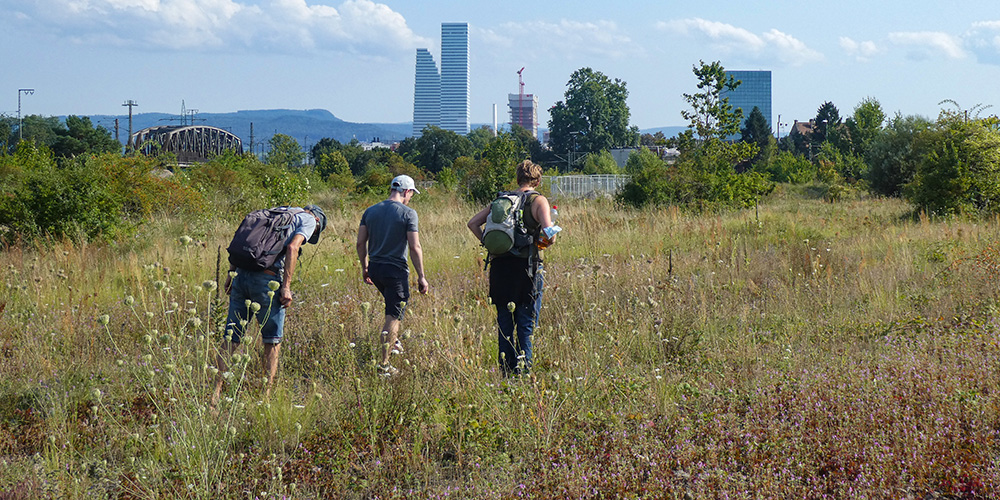Regional flora: Hunting for plants.
Text: Noëmi Kern
What plants are growing in Basel? To answer this question, in 2021, “Flora beider Basel” (Flora of Basel cantons) launched a citizen science project – a project in which the public is encouraged to participate.
Botany fans have recorded over 1,500 sightings of threatened plant species since the project was first launched. These include reports of populations that had not been observed for over 40 years. “That’s an impressive testament to the diversity of our region,” says Ramon Müller, who is clearly pleased with the results. Ramon Müller is general manager of the project and a research associate in the Department of Environmental Sciences at the University of Basel. Around 100 volunteers currently involved in the project document more common species as well. Staff at the University of Basel lend their academic expertise to the process of identifying and cataloging the species found by the volunteers. Nature conservation organizations and the Species Conservation Office of the Canton of Basel-Stadt are also involved in the project. In the 17th century, Basel's own Professor of Botany Caspar Bauhin (1560–1624) penned one of the world's very first local floras.
It's important to be familiar with and observe a region's local plant life. Vegetation changes in response to factors such as climate change and as a result of international trade facilitating the spread of novel species. Knowledge about rare species is valuable from a conservation perspective, as it helps protect and foster diversity. By the same token, this knowledge also makes it possible to identify species that were previously unknown in Switzerland before they spread too far.
Basel, with its port that serves as a hub for goods from around the world, is perfectly suited for this work. “It enables the public authorities to assess the risks associated with these neophytes, define measures to control their spread and observe the development over time,” explains Ramon Müller. This is particularly important in the case of invasive populations.
More articles in this issue of UNI NOVA (May 2023).





